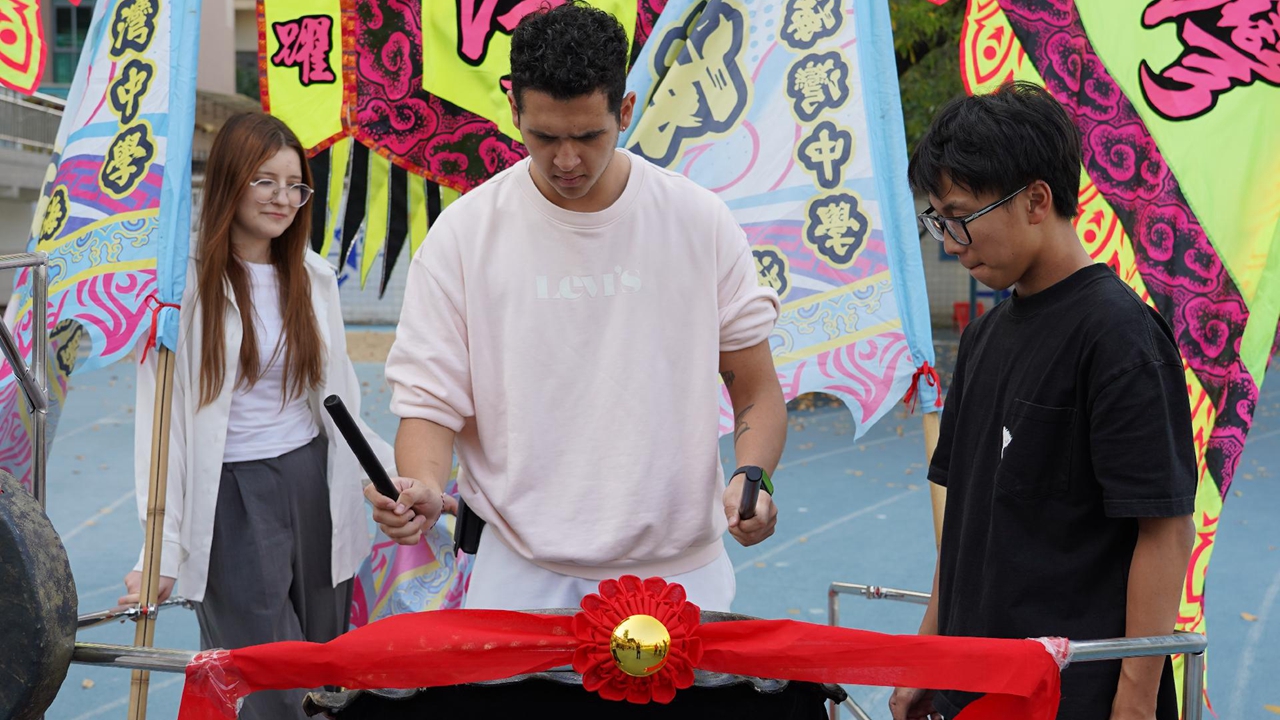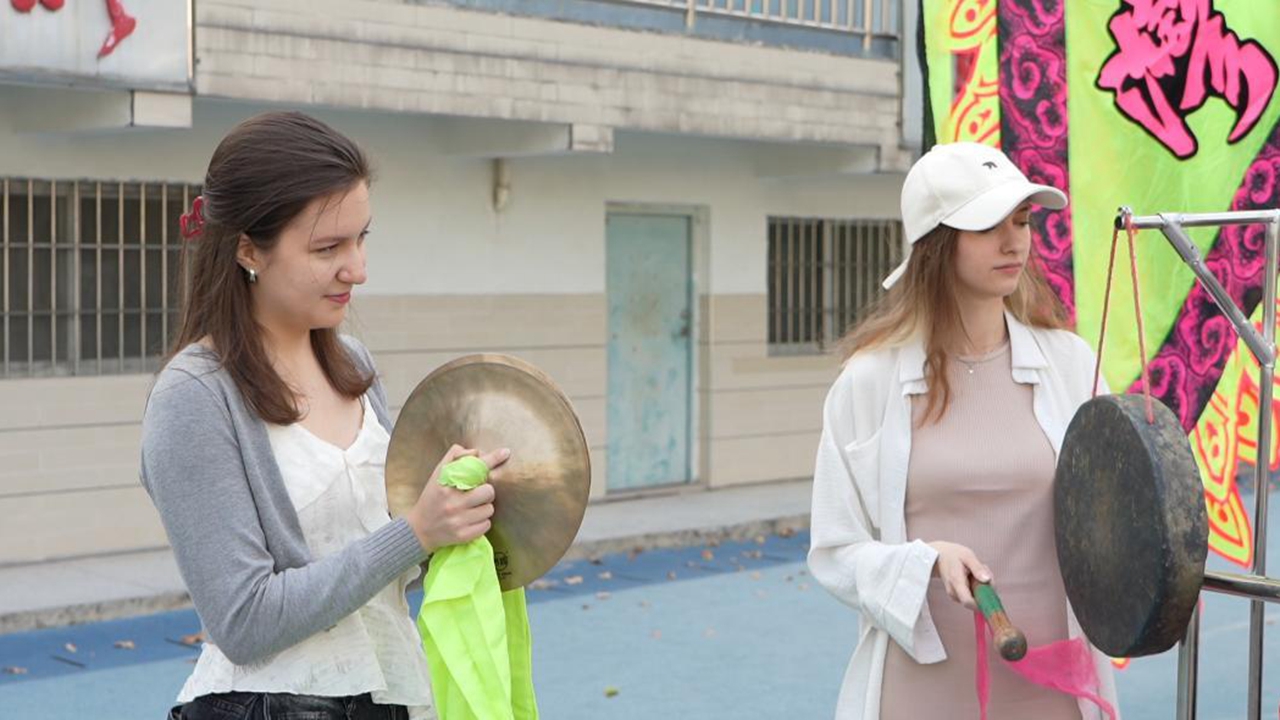Lion dance offers Gen Zers a glimpse of temple fair traditions
Writer: Wang Jingli | Editor: Lin Qiuying | From: Original | Updated: 2025-03-25
Video and photos by Lin Songtao
A group of six international students from The Chinese University of Hong Kong, Shenzhen (CUHK-Shenzhen) learned the dynamic art of the lion dance in Bao’an District on Sunday.

International students from CUHK-Shenzhen and members of Shenzhen Haiwan Middle School's lion dance team pose for a group photo after a cultural exchange featuring lion dance performances in Bao'an on Sunday.
The lion dance, an important part of China’s intangible cultural heritage, will be a highlight of the North Deity Ancient Temple Fair, or Sanyuesan, which will kick off today in Xixiang Subdistrict, Bao’an.
Members of Shenzhen Haiwan Middle School’s lion dance team warmly welcomed the group of international students. After watching a performance, the students got a hands-on experience.
The three female students chose to learn how to play the musical instruments — a large drum, cymbals, and a gong. The three male students chose to learn basics of the lion dance. After practicing under the guidance of members of the lion dance team, the international students successfully performed a lion dance routine.
In Chinese tradition, the lion is regarded as a mascot that can bring good luck. The dance has a recorded history of more than 2,000 years. During the Tang Dynasty (618-907), the lion dance was already introduced into the royal family.
Typically performed by two people — one controlling the lion’s head and the other the body and tail — the dance can also feature a lion cub or a performer with a silk ball, all moving in sync with the rhythm of traditional music.
Ancient Chinese people saw the lion as a symbol of bravery and strength that was capable of driving away evil spirits and protecting humans and livestock. Over time, performing the lion dance during festive occasions became a custom to pray for good luck, safety, and happiness.
“When we first got here, we thought it would be easy and that we’d be able to do it right away. But as soon as the teacher gave me the lion head, I realized how challenging it is to move it in a certain way. We quickly understood we wouldn’t be able to do it professionally, but it was still a lot of fun,” said Chico Manna, a freshman at CUHK-Shenzhen and member of the Z10 Club launched by EyeShenzhen.

Chico Manna (C) learns to play the drum during Sunday’s event.
Arina Zaitseva, an exchange student from Russia, found the lion dance fascinating and unique. During the event, she learned to play a large drum and gong. “I think the most interesting part for me was seeing how the lion dancers coordinated with us. It was a truly unusual experience,” said Zaitseva.
Arina Kurbeteva, also an exchange student from Russia, shared her enthusiasm, saying, “I joined today’s event because I wanted to learn more about Chinese culture. I knew lion dance is an important part of it, so I came here today. Learning to play the musical instruments, like the one called cha (镲) in Chinese, was really fun.”

Arina Kurbeteva (L) learns to play the cha (镲) while Arina Zaitseva (R) practices the gong (锣) during Sunday’s event. These instruments are used to create the rhythmic music that accompanies lion dance performances.
For all the international students, it was their first experience with the lion dance. They agreed that the event was an excellent way to engage with Chinese culture. Zaitseva noted, “Chinese culture is very different from others. Learning about traditional Chinese culture really helps enhance friendships between different countries.”
Manna added that this kind of event is a perfect way to introduce Chinese culture to others. Compared to something like food, which can be harder to share due to different tastes, the lion dance is a perfect way of introducing people to Chinese culture.
Founded in May 2023, the Haiwan Middle School Lion Dance Team consists of over 30 students. From campus events to community parades, the team continues to bring this ancient tradition to life in diverse and meaningful ways.